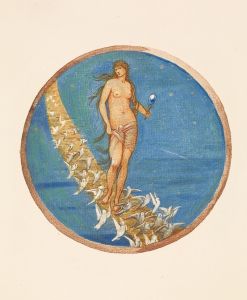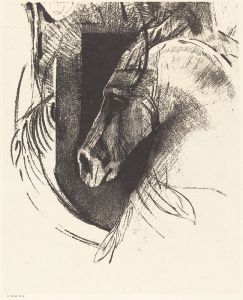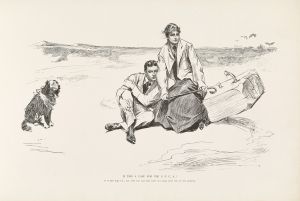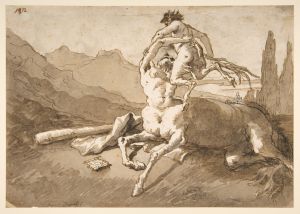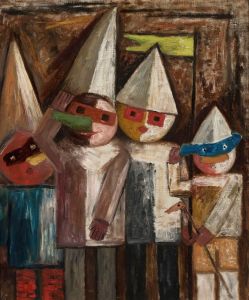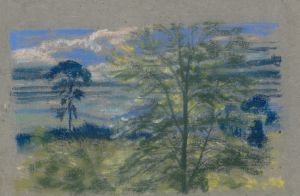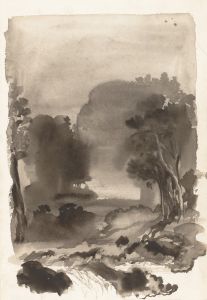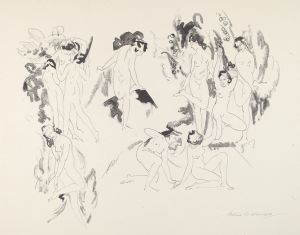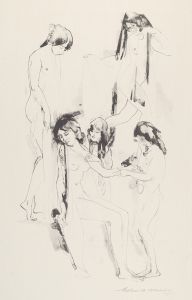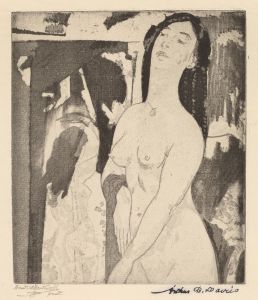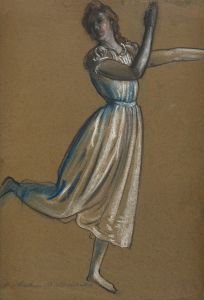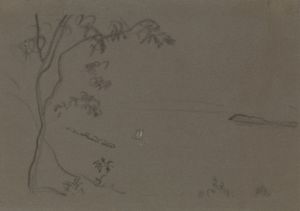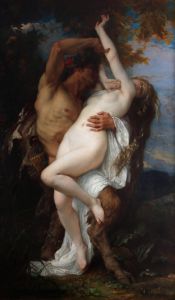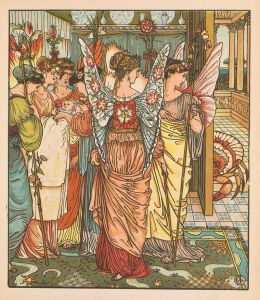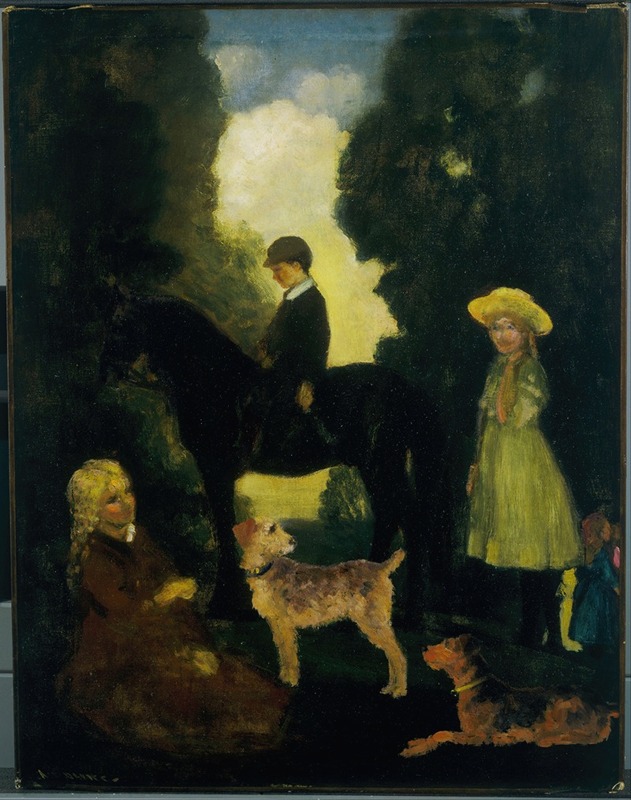
Children, Dogs and Pony
A hand-painted replica of Arthur Bowen Davies’s masterpiece Children, Dogs and Pony, meticulously crafted by professional artists to capture the true essence of the original. Each piece is created with museum-quality canvas and rare mineral pigments, carefully painted by experienced artists with delicate brushstrokes and rich, layered colors to perfectly recreate the texture of the original artwork. Unlike machine-printed reproductions, this hand-painted version brings the painting to life, infused with the artist’s emotions and skill in every stroke. Whether for personal collection or home decoration, it instantly elevates the artistic atmosphere of any space.
Arthur Bowen Davies was an American artist associated with the Ashcan School and known for his role in organizing the groundbreaking 1913 Armory Show, which introduced modern European art to American audiences. His work often features dreamlike scenes and a blend of realism and symbolism, reflecting his interest in both classical and modern artistic styles.
"Children, Dogs and Pony" is one of Davies' notable paintings, exemplifying his unique approach to composition and subject matter. The painting depicts a serene and idyllic scene, capturing children at play with dogs and a pony in a pastoral setting. This work reflects Davies' fascination with themes of innocence, nature, and the harmonious relationship between humans and animals.
Davies' style in "Children, Dogs and Pony" is characterized by a soft, almost ethereal quality. He often employed a muted color palette and gentle brushwork, which can be seen in the delicate rendering of the figures and the landscape. The composition is balanced and harmonious, with the children and animals arranged in a way that guides the viewer's eye through the scene, creating a sense of movement and interaction.
The painting is a testament to Davies' ability to blend elements of realism with a more symbolic and dreamlike quality. While the figures and animals are depicted with a degree of naturalism, the overall atmosphere of the painting suggests a world that is more idealized than real. This approach is typical of Davies' work, as he often sought to transcend the mundane and explore more universal themes through his art.
Arthur Bowen Davies was a key figure in the American art scene during the early 20th century. His involvement with the Armory Show helped to introduce American audiences to European avant-garde movements such as Cubism and Fauvism, which had a lasting impact on the development of modern art in the United States. Despite his association with these modern movements, Davies maintained a distinctive style that was rooted in his own artistic vision.
"Children, Dogs and Pony" is an example of how Davies' work often straddled the line between traditional and modern art. While he embraced certain aspects of modernism, such as an interest in abstraction and symbolism, he also retained a strong connection to more classical themes and techniques. This duality is evident in the painting's composition and subject matter, which combine to create a scene that is both timeless and evocative.
The painting reflects Davies' broader artistic philosophy, which emphasized the importance of beauty and imagination in art. He believed that art should elevate the viewer and provide a sense of escape from the everyday world. In "Children, Dogs and Pony," this philosophy is evident in the idyllic setting and the harmonious interaction between the children and animals, which together create a sense of peace and wonder.
Overall, "Children, Dogs and Pony" is a significant work within Arthur Bowen Davies' oeuvre, showcasing his unique ability to blend realism with symbolism and his commitment to exploring themes of innocence and harmony. The painting remains an important example of early 20th-century American art and continues to be appreciated for its beauty and evocative power.





